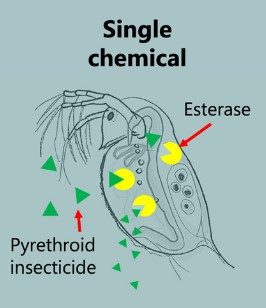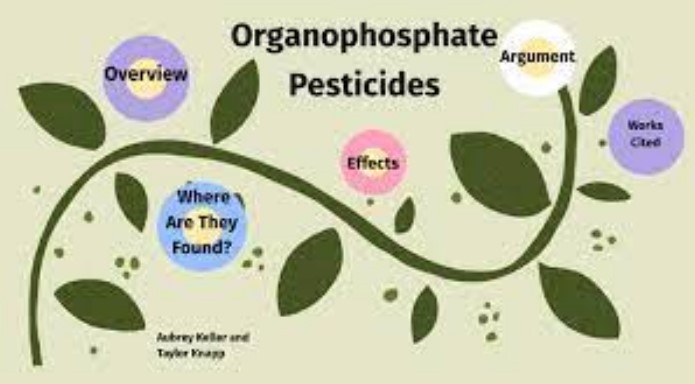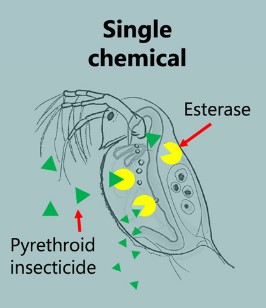Pesticides play a crucial role in agriculture and public health by controlling pests that affect crop production and spread diseases. Among the various types of pesticides, carbamates and organophosphates are two major classes that have been widely used around the globe. Despite their common goal of pest control, these compounds differ significantly in their chemical structure, mechanism of action, and impact on human health and the environment.
Carbamates and organophosphates work by inhibiting the activity of acetylcholinesterase, an enzyme essential for nerve function in pests and humans alike. However, carbamates are known for their reversible action on this enzyme, leading to shorter duration effects, while organophosphates bind irreversibly, causing longer-lasting inhibition. This fundamental difference affects their toxicity, usage, and regulatory status, making it crucial to distinguish between the two.
The significance of understanding these differences extends beyond academic interest; it has practical implications in choosing the right pesticide for a specific pest problem, assessing potential health risks, and understanding the environmental impact. With ongoing research and evolving regulations, the roles and perceptions of carbamates and organophosphates continue to change, reflecting the complex balance between effective pest control and safety concerns.

History and Use
Carbamates
Development Timeline
Carbamates were introduced in the mid-20th century, marking a significant advancement in pesticide technology. Their development was part of a broader effort to find safer, more effective alternatives to earlier pesticides that posed higher toxicity risks to humans and wildlife.
Common Uses and Examples
Carbamates quickly found a wide range of applications in agriculture for controlling a variety of pests that affect crops. Examples include Aldicarb, used on cotton, and Carbaryl, applied on over 100 different crops. They are also used in public health campaigns to combat disease vectors, such as mosquitoes, and in home gardens for pest control.
Organophosphates
Origin and Evolution
The origin of organophosphates traces back to the 19th century, but their development as pesticides began in the 1930s. Initially
researched for chemical warfare, their effectiveness against pests was soon recognized, leading to widespread agricultural use.
Predominant Applications
Organophosphates, such as Malathion and Chlorpyrifos, have been extensively used in agriculture to control insects on a variety of crops. They are also applied in public health efforts to eliminate vectors of diseases like malaria and dengue fever. Despite their efficacy, concerns over safety and environmental impact have led to stricter regulations and, in some cases, bans on their use.
Chemical Structure
Carbamates
Basic Composition
Carbamates are esters of carbamic acid. Their structure allows them to effectively inhibit acetylcholinesterase, a critical enzyme for nerve function, in pests. This inhibition disrupts the pests’ nervous system, leading to their death.
Mechanism of Action
The key to the mechanism of action of carbamates lies in their reversible binding to acetylcholinesterase. This means that the effects can be short-lived compared to other pesticides, reducing the risk of prolonged toxicity in the environment and non-target organisms.
Organophosphates
Core Components
Organophosphates consist of phosphorus compounds that interact with acetylcholinesterase in a more permanent manner. This irreversible inhibition leads to the accumulation of acetylcholine in the nervous system, causing continuous nerve signal transmission, which can be fatal.
Action on Pests
The action of organophosphates on pests is characterized by their ability to cause overstimulation of the nervous system. This results in paralysis and eventually death. Their potent activity makes them highly effective but also raises concerns about their use and handling.
Health Impact
Human Exposure
Routes of Exposure
Humans can be exposed to carbamates and organophosphates through various routes, including inhalation, skin contact, and ingestion. Farmers and agricultural workers are at the highest risk due to their direct contact with these chemicals during pesticide application and crop cultivation.
Symptoms and Treatment
Exposure to these pesticides can lead to a range of symptoms, from mild (such as headaches and dizziness) to severe (including muscle twitching, respiratory distress, and even death in extreme cases). Treatment often involves administering antidotes, supportive care, and, for organophosphate poisoning, atropine and pralidoxime to counteract the effects.
Environmental Effects
Impact on Non-target Species
The use of carbamates and organophosphates can inadvertently affect non-target species, including beneficial insects like bees, aquatic organisms, and wildlife. This biodiversity loss can disrupt ecosystems and lead to long-term environmental damage.
Persistence in the Environment
While carbamates tend to degrade more rapidly, organophosphates are known for their persistence in the environment. This can lead to prolonged exposure risks for non-target organisms and potential contamination of water sources and soil.

Regulation and Safety
Carbamates
Regulatory Status
Carbamates, due to their potential health and environmental impacts, are regulated by various international and national agencies. In the United States, the Environmental Protection Agency (EPA) assesses and controls their use through registration and labeling requirements. Similarly, the European Union has strict guidelines under the Regulation on Registration, Evaluation, Authorisation, and Restriction of Chemicals (REACH) framework, focusing on minimizing human and environmental exposure.
Safety Measures and Precautions
To ensure safety when handling carbamates, users must follow specific guidelines:
- Wear Protective Gear: Including gloves, masks, and eye protection.
- Proper Storage: Keeping pesticides in labeled, sealed containers away from children and pets.
- Training: Users, especially in agricultural settings, should undergo training on the correct application methods and emergency procedures in case of accidental exposure.
Organophosphates
Legal Restrictions
The legal framework governing organophosphates is more stringent due to their higher toxicity levels. Some organophosphates have been banned or severely restricted in many countries. For instance, the EU has banned several organophosphates for agricultural use, and the EPA has phased out residential uses of certain compounds due to health risks.
Protective Guidelines
For the safe use of organophosphates, stringent protective guidelines are in place:
- Certification for Users: Mandatory certification and training for applicators to ensure they understand the risks and safety procedures.
- Environmental Management: Strategies to reduce runoff and prevent contamination of water sources.
- Emergency Response Plans: Ready access to antidotes and medical care for poisoning incidents.
Advantages and Limitations
Carbamates
Benefits in Pest Control
Carbamates offer several advantages in pest management:
- Broad-Spectrum Activity: Effective against a wide range of pests.
- Lower Toxicity to Mammals: Generally safer for use around humans and animals than organophosphates.
- Rapid Breakdown: They degrade faster in the environment, reducing long-term residue concerns.
Potential Drawbacks
Despite their benefits, carbamates have limitations:
- Resistance Development: Pests can develop resistance, diminishing effectiveness over time.
- Toxicity to Beneficial Insects: Can harm non-target species, impacting biodiversity.
- Regulatory Challenges: Tightening regulations may limit use and availability.
Organophosphates
Effectiveness and Efficiency
Organophosphates are highly effective as pesticides due to:
- Potent Action: High efficacy in controlling pest populations.
- Versatility: Useful in various settings, from agriculture to public health.
Concerns and Criticisms
The use of organophosphates is not without concerns:
- Human Health Risks: Exposure can lead to serious health issues, including neurological damage.
- Environmental Persistence: Longer degradation periods lead to potential accumulation in ecosystems.
- Regulatory Restrictions: Increasingly stringent regulations limit their use and application.
Recent Developments
Research and Innovations
Advances in Formulation
Recent research has focused on developing safer, more effective pesticide formulations:
- Encapsulation Technology: Reducing direct exposure to active ingredients.
- Targeted Delivery Systems: Minimizing non-target effects and enhancing pest control efficiency.
Alternative Pest Control Strategies
Innovation in pest management is leading to alternative methods:
- Biological Control: Using natural predators or pathogens to control pest populations.
- Genetic Approaches: Genetically modified crops that are pest-resistant.
- Integrated Pest Management (IPM): Combining chemical, biological, and cultural practices for sustainable pest control.
Global Trends
Changes in Use Patterns
The global trend is moving towards reduced reliance on traditional chemical pesticides:
- Shift to Biopesticides: Increasing use of natural compounds with lower toxicity profiles.
- Precision Agriculture: Leveraging technology to apply pesticides more efficiently and only where needed.
Emerging Challenges and Solutions
The field faces ongoing challenges:
- Climate Change: Altering pest distributions and behaviors, requiring adaptive management strategies.
- Resistance Management: Developing strategies to manage and prevent resistance in pest populations.
- Public Health: Balancing the need for effective pest control with protecting human health and the environment.
Frequently Asked Questions
What are carbamates?
Carbamates are a class of pesticides known for their reversible inhibition of acetylcholinesterase, an essential enzyme for nerve function. They are used in agricultural, residential, and public health settings to control a wide range of pests. Carbamates break down more quickly in the environment compared to other pesticides, which minimizes their long-term ecological impact.
How do organophosphates differ from carbamates?
Organophosphates differ from carbamates primarily in their mode of action and persistence. They irreversibly inhibit acetylcholinesterase, leading to prolonged nerve activity that can be more toxic to both pests and non-target organisms, including humans. Organophosphates tend to be more potent and have a longer environmental persistence than carbamates, raising concerns about their safety and environmental impact.
Are carbamates and organophosphates still used today?
Yes, both carbamates and organophosphates are still in use today, though their usage is highly regulated. Innovations in pesticide development and increasing environmental and health safety standards have led to more stringent regulations and a decline in the use of some of the more toxic organophosphates. Carbamates are often preferred for their lower toxicity and quicker degradation in the environment.
What are the environmental impacts of these pesticides?
Both classes of pesticides can affect non-target species, including beneficial insects, aquatic organisms, and wildlife. Organophosphates, in particular, are more persistent in the environment and can pose significant risks to ecosystem health. Research into alternative pest control methods and stricter regulatory measures aim to mitigate these environmental impacts.
Conclusion
Understanding the differences between carbamates and organophosphates is essential for making informed decisions regarding pest control strategies that balance effectiveness with human health and environmental safety. As the agricultural and public health sectors continue to evolve, so too does the importance of selecting the appropriate pesticide for a given application.
The ongoing research into safer, more sustainable pest control methods reflects a broader commitment to environmental stewardship and public health protection. By fostering a deeper understanding of the nuances between these pesticide classes, we can advance towards a future where pest control is not only effective but also aligned with the principles of safety and sustainability.

